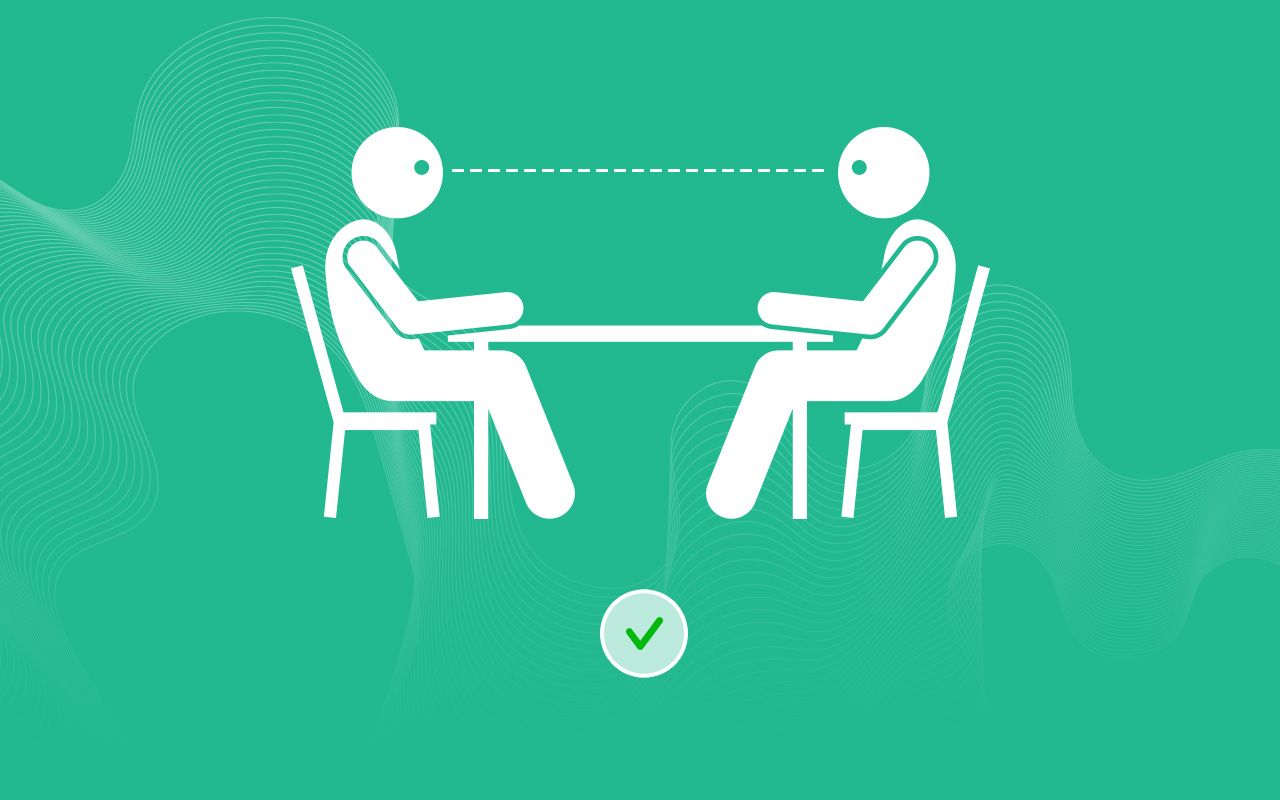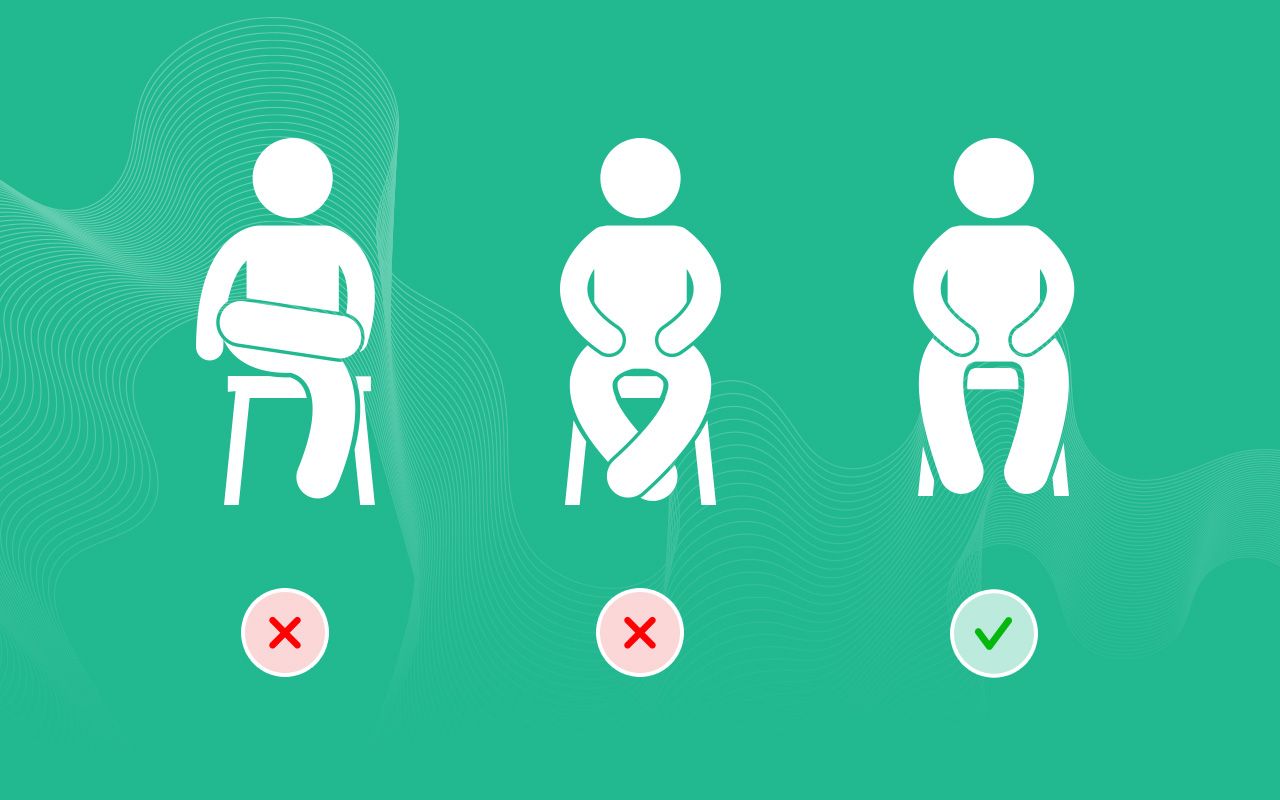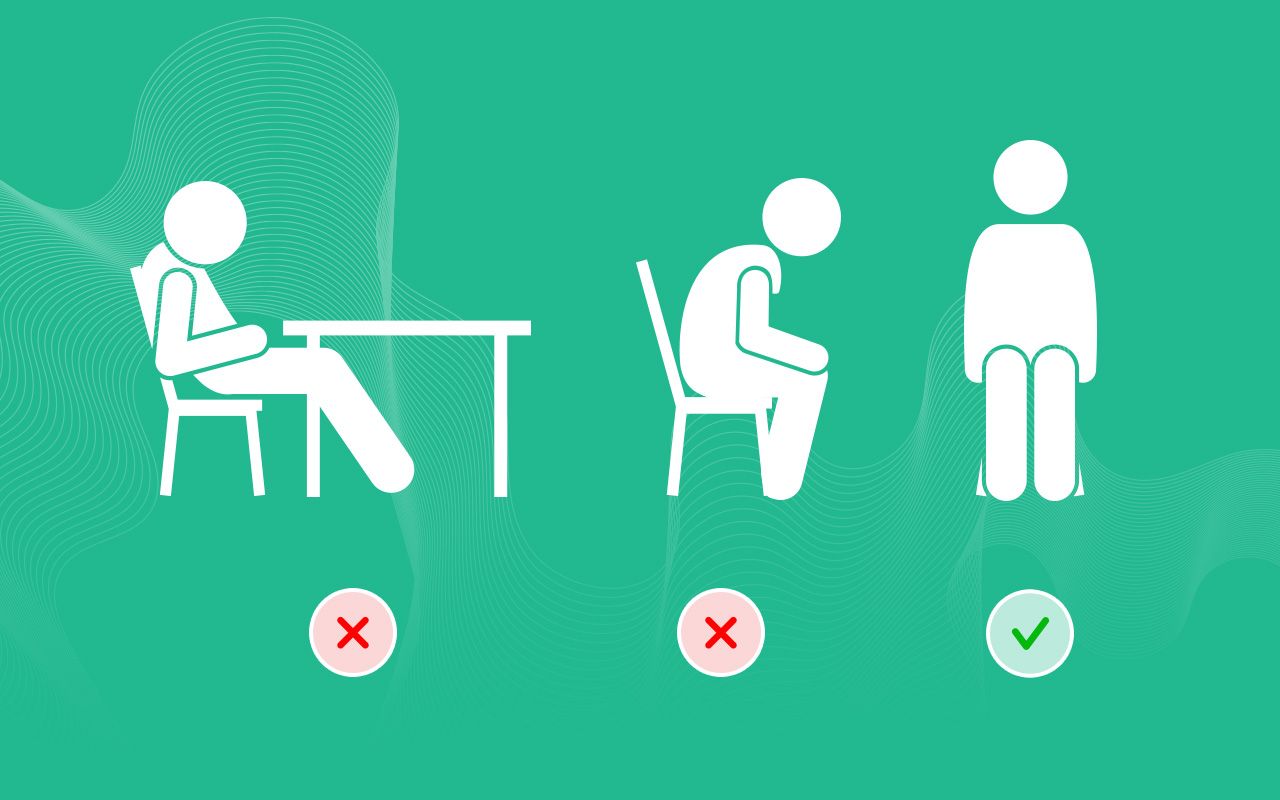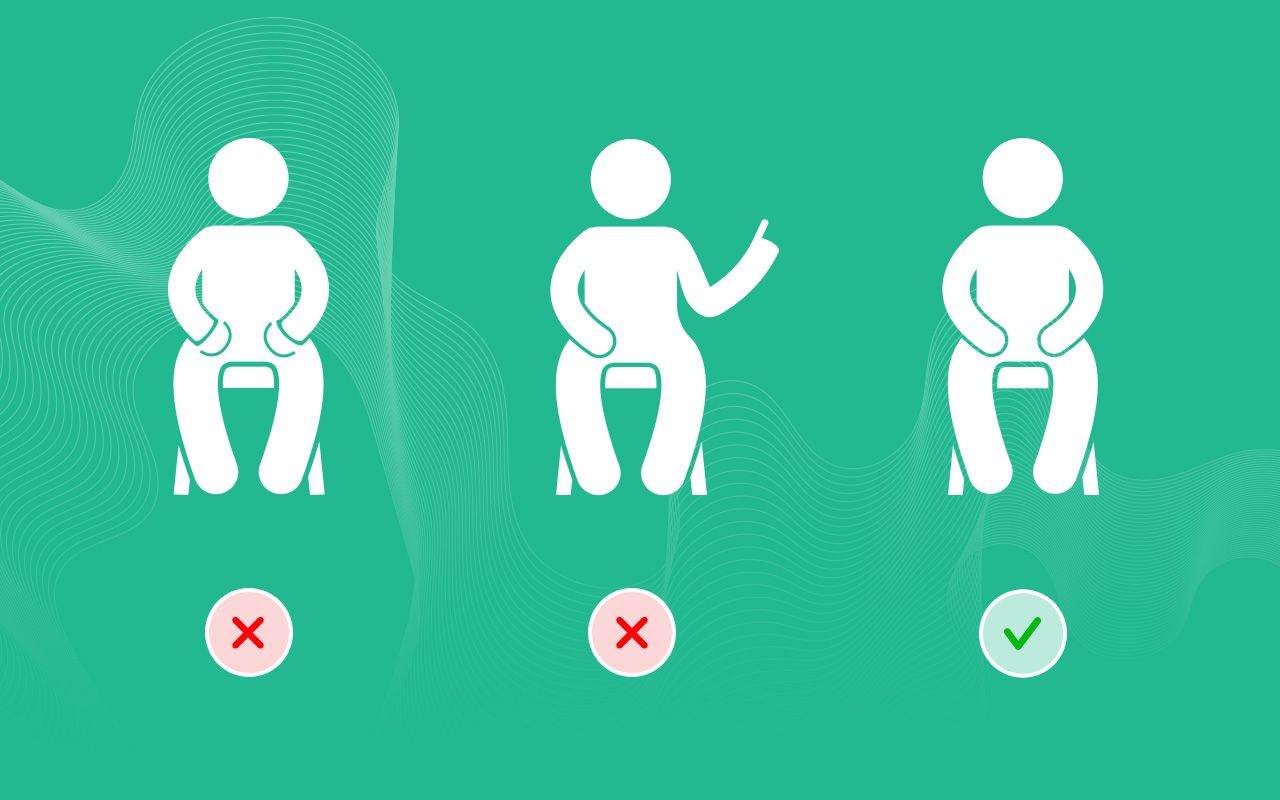I’ve been to dozens of interviews. Some have failed, some were successful, but after each one I learned some do’s and don’ts that helped me make my latest interview a score.
Also read our advice on how to answer the most tricky interview questions.
A huge part of communication is nonverbal. Question is, how do we ace nonverbal communication if most of the time it takes place subconsciously?
Well, there’s only one answer: practice.
”It can be a tough habit to break, but if you continue to make yourself aware of your body movements and physical cues, altering them will eventually feel natural.”
Jennifer Connelly
I know it’s easier said than done but ‘fake it till you make it’ actually works here. The body position is usually determined subconsciously and luckily for us, it works in reverse as well. Consciously assuming a position of confidence will affect the subconscious perception of what’s happening and boost your self-confidence.
Trick your subconscious into confidence by consciously taking a power position.
No need to push yourself in front of the mirror every day to train confidence, though. It’s pretty easy to fake it in a short conversation. With just a bit of practice, it will come naturally to you and you will soon be in control of your body language.
One good thing to mention here is that we naturally copy the body language of the person we’re conversing with. Being in sync with the other person will make them feel safer and will create a seamless connection. You do not have to mirror them on purpose, however. This will occur by itself.
There are four pieces which determine proper, confident body language. Head, shoulders, hands and feet. These four chunks send their own individual messages and any one of them can give you out.
Now on how to control them, let’s start with the head.
Head – don’t fixate your eyes, don’t be defiant, nod
Besides talking, the position of the head and the gestures you do with it have a great importance in non-verbal communication. Apart from some cultural differences (yes is no and no is yes in Bulgaria, or bobbing your head from side to side in India to show agreement) there are several gestures which are universal.
- Lifting your chin up shows arrogance, letting it down shows submission.
- Nodding (or bobbing) occasionally shows agreement, understanding or that you’re overall listening.

You want to keep your head leveled with the person you’re talking with. However, if their chin is a bit up, assuming the same position as theirs shows defiance.
Eyes play a big role in interpersonal communication. A lover’s gaze can empty your head. A fleeting moment of eye contact with a cute passer-by combined with a slight smile will make your day.
Make eye contact, it’s important!

On the other hand, looking straight at the person uninterruptedly is obviously creepy. No seriously, it’s creepy. Let your gaze wander naturally around the room you’re in but try to make some eye contact when the person is speaking to you to show that you’re listening.
When it’s your turn to talk maintain some level of eye contact but don’t stare at them. Looking at the person you’re talking with shows you’re interested in getting the message across and want them to trust what you’re saying. If you’re interviewed by two people, make sure you look at both of them while talking.
It’s not a monolog, it’s a conversation.
Eye contact is hard to get right therefore don’t sweat it too much unless you know you look around too much, then don’t. I know I’m not making it easy, sorry.
”Our bodies have a language of their own.”
Travis Bradberry
Legs – knees close but not touching, heels on the floor
Where are you sitting? Is it an office, a cafe or a lounge? Is it an office chair or a sofa? Regardless what the answer is, the rule is as follows:
Sit with your thighs parallel to the floor and your back straight.
These two factors alone will find you a stable position that allows for good posture.
Try to sit anywhere between the center and the edge of the chair, this way you’ll be comfortably planted in the chair and have great posture. DO NOT extend your feet forward, you’re not chilling with your besties. If you do these two things, your position should be impeccable.
- Bend your knees inward a little
- Thighs parallel to the floor
- Place your heels on the floor, toes facing straight or slightly sideways.

Ready? Go. In a rare case that your seat is too high for all three things to happen at once, find a position that doesn’t put stress on your legs. Shaky legs mimic nervousness.
”People judge you by your body language, but you can also impact how you perform based on what you do with your body.”
Jeff Haden
A note here is: If your toes face inwards it shows insecurity, discomfort or intimidation. If your heels are not touching the floor it means you’re anxious, “ready to spring”, in a fight-or-flight position. Neither of these perceptions is good for you. Giving off the vibe that you’re intimidated makes people trust your words less. If you’re intimidated you’re scared if you’re scared you’ll say anything to get yourself out of that situation. Paired with the “ready to spring” out of there, creates a pretty uncomfortable atmosphere.
Maybe there’s a table between you and now you’re thinking “Well the interviewer can’t see my legs so I can be as shaky as I want”. Wrong. The proper position contributes to posture. Posture contributes to a good impression. Do it anyway. Always. Everywhere. Even in your sleep. Just kidding.
Here, unfortunately, is where some social expectations come into play. Women could cross their legs or have the knees almost touching, facing forward. Men should not cross their legs, and their knees shouldn’t be touching. A position where your knees are slightly apart facing forward is appropriate in both cases.
DO NOT SLOUCH.
Upper body – we’re not intimidating anyone here, keep it normal
Now that you’re sitting like a champ, your chest and shoulders come into play. Unless you’re a Magnificent Frigatebird, chest too far forward communicates dominance and adversarialism.

The straight back (which happens when you sit like a champ will automatically bring your chest in a confident but neutral position which also allows for easy breathing.
Your shoulders are now in a good position too. If you arch your shoulders back too much it will puff your chest. On the other hand, bringing your shoulders inwards will show embarrassment and submission. Keep them comfortably straight.
Don’t suck your belly in.
Sucking your belly in will prevent you from breathing normally and will cause you to talk funny or run out of breath. Straight back equals natural position, take advantage of it.
DO NOT SLOUCH to any side. Sit straight.
Hands – you’re not an Air Dancer but gesticulating is good
The biggest problem here is, if you’re nervous, your hands will start shaking and gesticulating properly will be hard. Worry not my friend, there is an easy hack here and it’s called:
”Don’t think about it.”
Rick Sanchez
The more you think about it the longer it will continue, a watched pot never boils, focus on other things.
You want your arms down alongside your body, rest your hands on your lap in a comfortable position with your elbows facing slightly outwards. If you glue your elbows to your body that will bring your shoulders down and now you look intimidated. No good.
A little bit of fidgeting is okay and none is perfect. None is achieved by using your hands to gesticulate.
Don’t flail your arms like your life depends on it.
Draw imaginary shapes, plot graphs, do the robot (don’t do the robot), they all help contribute to your argument or story.
DO NOT POINT.
Yeah, you. I’m talking to you. It’s aggressive, don’t do it.
Oh, one more thing. If you’re sitting at a table, place your forearms and hands on the table, elbows sticking out. Hiding your hands under the table is the same as hiding your hands behind your back.
It means you’re lying.
Don’t lie.
Since hands are such an important instrument to communication, hiding them indicates that you’re lying. So does covering your mouth while you speak and scratching the back of your head or side of your neck or your ears or your nose or… just don’t touch your face and head. Do something else with your hands.
Here’s a checklist for you:
- Don’t shove your hands between your thighs,
- Don’t put them in your pocket,
- Don’t clutch your hands together,
- Don’t break your fingers and
- Don’t rest with only one elbow on the armrest.

Acing the interview might sound like a daunting task but isn’t that why you’re going to an interview to begin with? Rehearse these while out with friends or while just sitting around. Any sitting opportunity is an opportunity to sit properly.
Best of luck to all of you and let me know in the comments if it worked for you. DO NOT SLOUCH.
Third time’s a charm!
Make one that's truly you.



